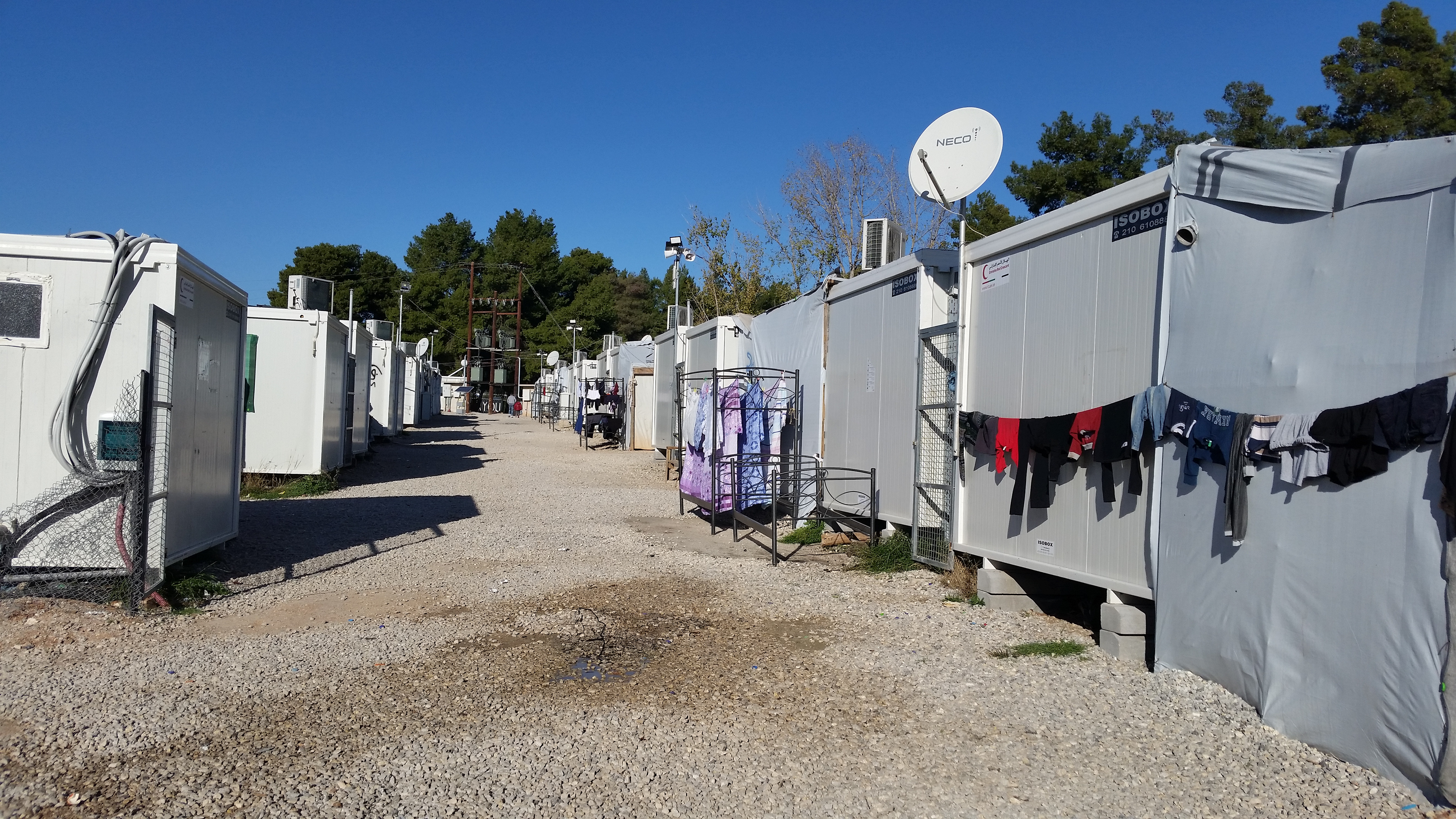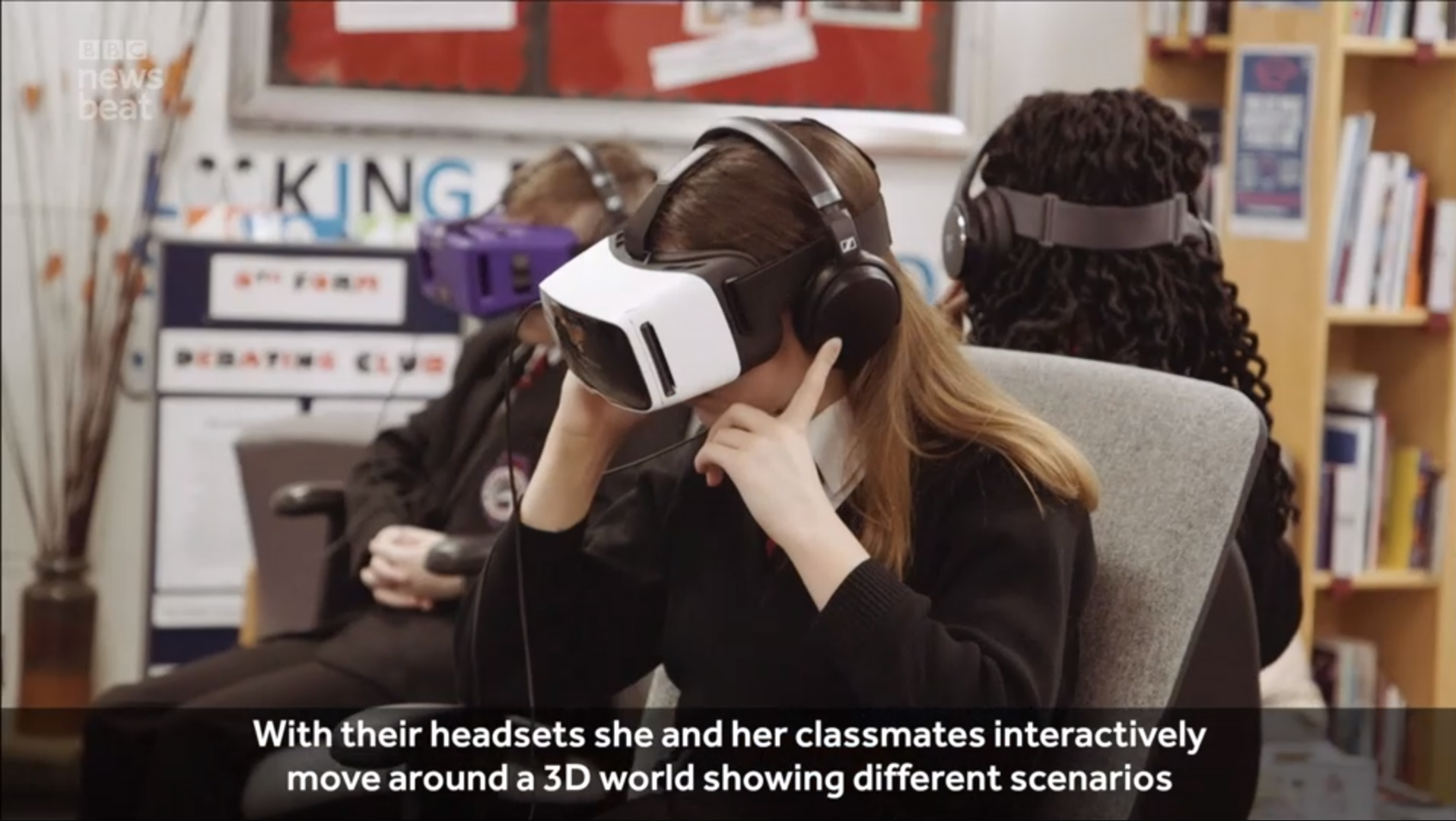Overview
This project was conducted in Greece over the period of 6 weeks between Sep and Dec 2017 as the field work of my PhD field study. It involved a myriad of activities with different stakeholders such as NGO staff, governmental representatives of the Greek ministry of Education, displaced family parents, and displaced children. These activities led to the design of a digital self-learning space at the camp which has been ongoing ever since and then got adapted and funded by Armando Aid UK NGO. Furthermore, it led to creating a digital library for adults.
The problem
The main problem was that there was about 250 children at the camp who were not attending any form of educational activities and needed to learn literacy. Furthermore, there were also many adults who had no means of learning languages that they would need once they are relocated to their future host countries such as Germany, UK, Ireland, France, Sweden and others.
My role
My role was to conduct and manage the whole research in all of its phases and deliver a design for the possible products with minimal costs of production. The summary of my task was as follow:
1- Conduct a literature review and report summary regarding the emergency as a whole
2- Understand the different stakeholders, their needs, and their fears
3- Work with all stakeholders on identifying the requirements and educational needs
4- Conducting participatory design sessions with different stakeholders to come up with, low-fidelity wireframes and mockups
5- Develop new solutions or reuse available open educational resources to fit the needs
1- Conduct a literature review and report summary regarding the emergency as a whole
2- Understand the different stakeholders, their needs, and their fears
3- Work with all stakeholders on identifying the requirements and educational needs
4- Conducting participatory design sessions with different stakeholders to come up with, low-fidelity wireframes and mockups
5- Develop new solutions or reuse available open educational resources to fit the needs



Methods
Literature review and reports analysisThis was conducted to get an overall understanding of the challenges faced by the possible stakeholders ahead of the face to face activities. This was very important as in this case, understanding the cultural and social sensitivities of different stakeholder groups was the key of relationship building, gaining the research consents, and get access to a larger participant groups.
EthnographyEthnography was implemented in the form or observation and active participation in the context. This method aimed to enlarge the understanding of the culture, context, needs, and fears of the different stakeholders. Furthermore, another aim was to create relationships based on trust with the different stakeholders. This was achieved by volunteering with the NGOs, and providing translation and consultation.
InterviewsInterviews started after three weeks of the ethnography to allow time for relationship building. Interviews were conducted with the NGO staff, parents, and children. The aim of the interviews was to achieve an understanding of the requirements and system objectives, and how they can be implemented.
Participatory design workshops (Children learning System)
PD workshops were conducted with children first, then with the adults. Children activities involved techniques suitable for children such as drawing, photography, and 3D modelling using Lego. Children designed several applications that they would help them learn literacy of different languages, personas were created for two different types of children users based on their previous literacy level. One persona was about a child who is illiterate and has to learn the alphabet first, whereas the second persona was for a child who is literate and wants to improve his knowledge.
Adult activities involved sticky notes, interviews, and focus groups to work on the designs that were initiated by the children and see how they can be implemented. This is because earlier activities including the design activities showed that children have a great experience in defining what designs of learning can be used by them in an engaging manner, whereas the adults major contribution was in how the systems can be implemented and what resources can be managed such as human resources and volunteers, physical resources such as rooms and locations, technical such as tablets and laptops, and funding resources. In other words, children were contributing with the functional system requirement, and adults contributed in the contextual requirements.
Participatory design workshops (Adult's learning System)
For the adult solution I conducted several co-design workshops with the adults to see what equipment they suggest using, and how they would use it. The designs mainly suggested the use of smart phones as a main mean of learning. Many of the designs were influenced by famous websites such as YouTube or Facebook. The resulted designs were accumulated in a main design that suggested having a digital video library of language lessons grouped by the language, in addition to exercise section where they can get feedback on their learning.
For the adult solution I conducted several co-design workshops with the adults to see what equipment they suggest using, and how they would use it. The designs mainly suggested the use of smart phones as a main mean of learning. Many of the designs were influenced by famous websites such as YouTube or Facebook. The resulted designs were accumulated in a main design that suggested having a digital video library of language lessons grouped by the language, in addition to exercise section where they can get feedback on their learning.











Data analysis examples
Challenges (examples)
Experience and literacy:
A main challenge was the experience of all participants and low digital literacy level. Some children also had difficulties in drawing the technical equipment. For children, I printed a list of technical equipment in a way that it can be used by children to include it in their drawings.
This challenge required lots of work on the negotiation between different stakeholders over a few weeks, I focused on establishing a mutual learning environment where each group of stakeholders understand the other groups and see where they are coming from. In the end, the Greek part agreed to including more English, German, and French lessons. On the other hand, I worked with the teachers on creating school activities that foster friendship between refugee children and the Greek children and the Greek teachers. The relationship built between the students and the teachers, alongside their new Greek friends, increased the interest of learning Greek.
Language:
Many participants spoke languages that I did not understand, thus, I had to work with some participants via translators. This required preparation sessions between me and the translators to explain to them how translation should happen, and which topics require complete neutrality in translation and why so the translation would not affect the results.
Lack of resources:
This design process was done in a context with extremely limited resources. Thus, I had to be creative in what to use. For example, to create the adult’s solution, there was no internet available for the users in the refugee camp. The solution was to create a local WIFI system using a couple of routers and WIFI extenders, connected to a laptop which acts as a server. I designed and created a website using bootstrap and PHP to be mobile first (smart-phone friendly). In addition, we communicated with different content owners of videos that teach the main requested languages. The content owners agreed on providing us with the license to download and use their content internally. Later, the content was downloaded offsite and was installed to the server laptop and thus the content became available to all the camp residents. Furthermore, I researched a list of applications that can be used alongside the downloaded videos and these apps were also downloaded and brought to the camp residents on USB flash memory that could be connected to the smart-phones so they can install the apps.
Similar method was used for children system, where there was no funding or time to develop educational content, but there were various available open educational resources and applications that match the children designs. Such apps were downloaded and installed on 15 tablets which formed the children digital self-learning space.
Similar method was used for children system, where there was no funding or time to develop educational content, but there were various available open educational resources and applications that match the children designs. Such apps were downloaded and installed on 15 tablets which formed the children digital self-learning space.
After usability testing, both solutions were improved and both are now still working and improving people’s life at that camp which now is hosting 4000 people as compared to 750 when I was there.
Groupwork difficulties:
Many participants, especially children, faced challenges in groupwork activities where collaboration is essential. Thus, techniques had to change to match this ddifficultie and I used a participatory design technique known as "Mixing Ideas" that allows different ideas to be mixed without the need for the participants to work together. It did add a bit of overhead time for validation, but this was not a main difficultie since the designs were similar in essence.
Design examples








Implementation
To create the adult’s solution, there was no internet available for the users in the refugee camp. The solution was to create a local WIFI system using a couple of routers and WIFI extenders, connected to a laptop which acts as a server. I designed and created a website using bootstrap and PHP to be mobile first (smart-phone friendly). In addition, we communicated with different content owners of videos that teach the main requested languages. The content owners agreed on providing us with the license to download and use their content internally. Later, the content was downloaded offsite and was installed to the server laptop and thus the content became available to all the camp residents. Furthermore, I researched a list of applications that can be used alongside the downloaded videos and these apps were also downloaded and brought to the camp residents on USB flash memory that could be connected to the smart-phones so they can install the apps.
Similar method was used for children system, where there was no funding or time to develop educational content, but there were various available open educational resources and applications that match the children designs. Such apps were downloaded and installed on 15 tablets which formed the children digital self-learning space.
Similar method was used for children system, where there was no funding or time to develop educational content, but there were various available open educational resources and applications that match the children designs. Such apps were downloaded and installed on 15 tablets which formed the children digital self-learning space.
After usability testing, both solutions were improved and both are now still working and improving people’s life at that camp which now is hosting 4000 people as compared to 750 when I was there.








